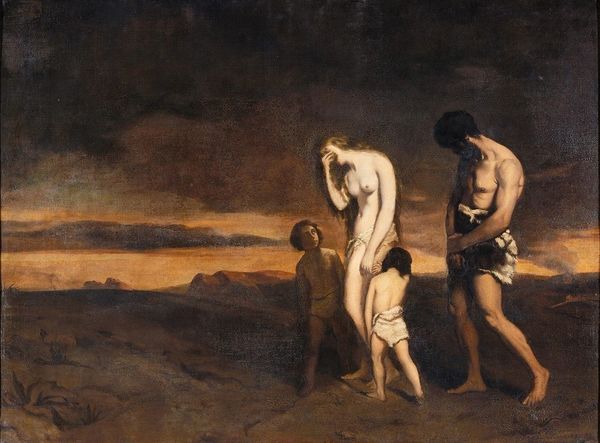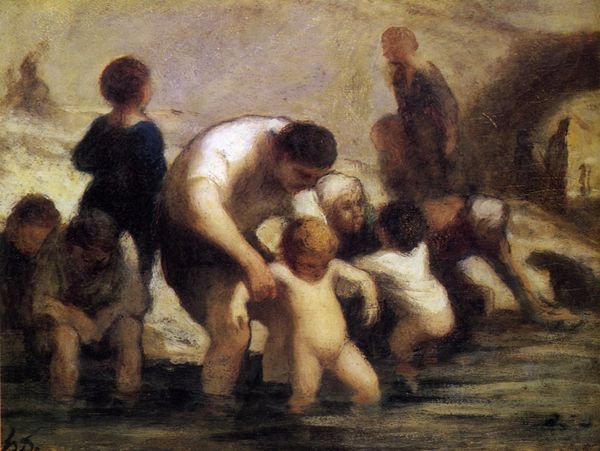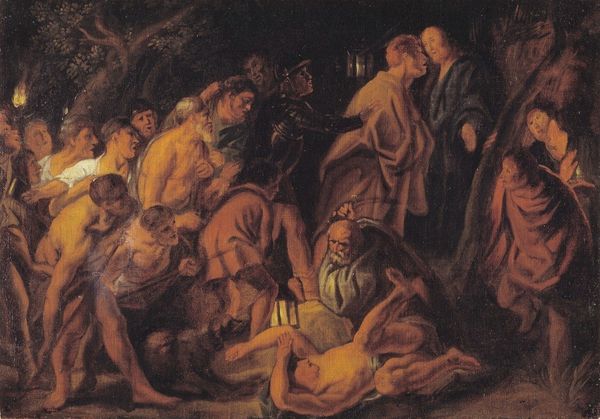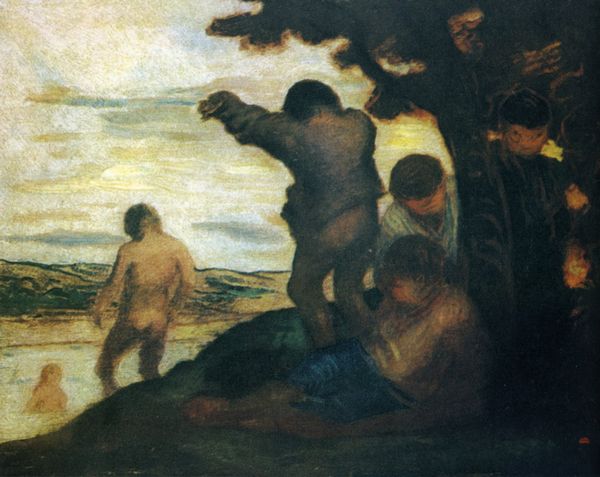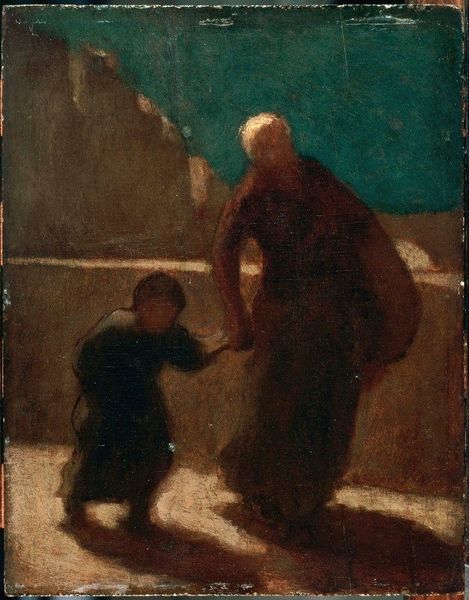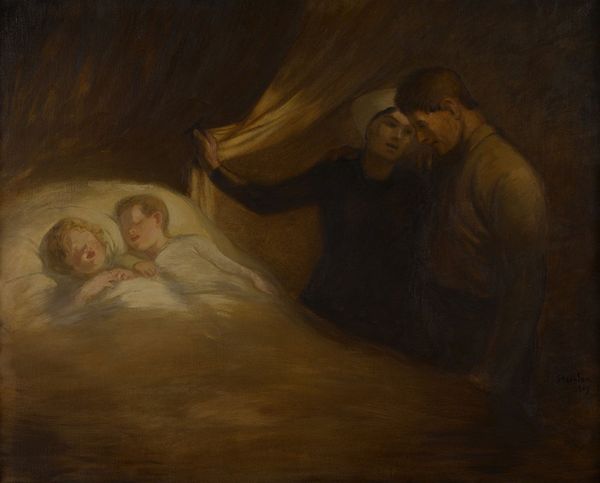
Copyright: Public Domain: Artvee
Curator: Standing before us is Honoré Daumier’s oil painting, "The First Bath," estimated to have been created in the 19th century. Editor: There's a vulnerability here. The raw umber tones create such an earthiness, and the figures blend with the environment, all softened by Daumier's brush. I notice how prominent the hands are on the adult male. Curator: Indeed, the tactile sense is potent, but consider the iconographic implications of water as a site for ritual and purification. This “first bath” carries cultural memory from Christian baptism to everyday care and cleanliness. Editor: Agreed, but let's look closely at the material conditions: the roughness of the cloth, the suggestive depiction of a barren or waste landscape in the background. What sort of resources and work might these people be without, that require this activity? What does it mean to create softness out of such scarcity? Curator: Perhaps Daumier juxtaposes the mundane, physical act with profound, symbolic weight: the hope inherent in new life, the potential for redemption. Daumier infuses social realism with allegorical meaning. Editor: Or it might simply be that this act of labor and intimacy—a bath—was a very specific material struggle. Water has to be found, firewood acquired, soap or a surrogate created. It shows us lives reliant on nature and work for their survival, something easily romanticized. I don't know if Daumier is actually idealizing that in particular or simply presenting its image. Curator: Regardless, by portraying a mother, father and child in a scene of simple bathing, Daumier highlights timeless, cross-cultural ideals: family and the sanctity of new life. He asks the viewer to meditate on the deeper currents of meaning flowing through an ordinary act. Editor: True. And whether he sought to elevate or simply observe, he rendered this quiet act of labour beautifully. There’s something so captivating about his treatment of fabric and form, about what we *don't* see clearly.
Comments
No comments
Be the first to comment and join the conversation on the ultimate creative platform.
